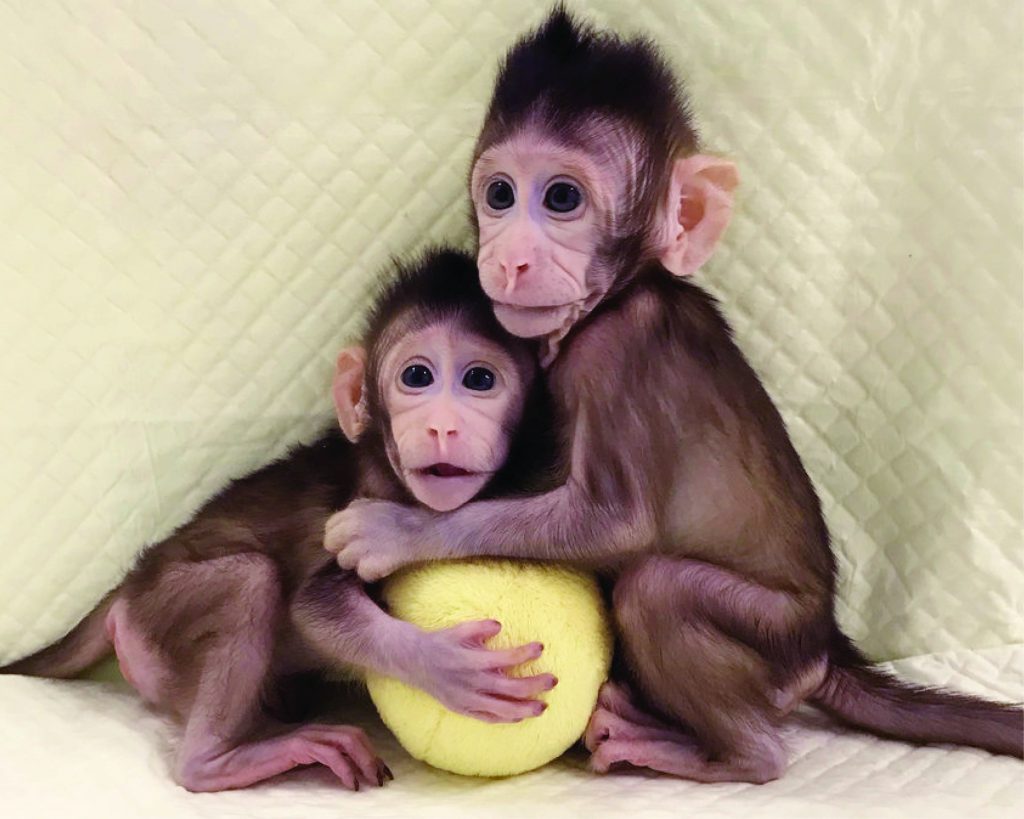Since the creation of Dolly the Sheep, the first mammal to be cloned with the use of somatic cells, hundreds of attempts have been made at cloning a variety of animals. Despite many failed attempts to clone certain animals, scientists did not back out; they have already duplicated 22 types of animals successfully with the help of new scientific research. In fact, on Dec. 5, scientists succeeded in duplicating two female macaques, a species of primates, for the first time in history.
The cloning of Zhong Zhong and Hua Hua, the two macaques, is not only a noteworthy historical event, but also a significant scientific breakthrough. For decades, scientists from many different countries have made countless attempts to clone monkeys but failed to do so due to the relatively complex body structure monkeys have compared to many other mammals. Nevertheless, after years of continued scientific research, several Chinese scientists at the Chinese Academy of Sciences (CAS) have finally succeeded in cloning the primates, using the same technique that was utilized to duplicate Dolly the Sheep.
Chinese scientists duplicated Zhong Zhong and Hua Hua with the technique of nuclear transfer, the standard method of cloning. While the general process of nuclear transfer is fairly simple to understand, the actual steps scientists take to complete the procedure are more intricate. Specifically, the process of nuclear transfer requires scientists to take the egg of one female organism and the cell of another organism, combine those two parts together to create a fertilized egg, and implant that fertilized egg into a third organism to create an embryo.
Despite the apparent simplicity of such steps, the actual process involves great delicacy and attention. Once the fertilized egg is implanted into a female organism, it is easy for the embryo to die out from even the slightest mishandling of the donor cell. In other words, the process is not as simple as plucking the nucleus out of a cell, injecting it into an egg, and expecting it to produce flawless results. Rather, as the embryo develops certain features and starts defining specific parts of the body, the DNA in it is likely to get bunched up so that only a few genes are expressed. If this happens, the embryo may die from not having all the traits necessary for its survival. It is possible to prevent such cases; nevertheless, at the same time, it requires complicated chemical reactions to do so, thus making it more difficult to produce cloned organisms.
Worried about the low survival rates of cloned animals, the Chinese scientists created 109 fertilized eggs in the hopes of successfully producing at least one offspring. After implanting the fertilized eggs in 21 different female animals, the scientists experimented with several different chemical reactions that could potentially prevent the DNA from bunching up and leading to the death of the embryos. After countless trials, the scientists finally reached the desired result: two of the 109 fertilized eggs were successfully transformed into healthy infants now known as Zhong Zhong and Hua Hua.
Despite being only seven to eight weeks old, Zhong Zhong and Hua Hua represent the next big step in cloning, according to the CSA scientists. In other words, the Chinese scientists claim that cloning primates can contribute greatly to biomedical research, since they can be used as test subjects to discover medical cures for Parkinson’s and Alzheimer’s disease. Moreover, because monkeys are close relatives to humans, some scientists even claimed that with a little more improvement in primate cloning, it might soon be possible to clone humans as well. Certainly, the birth of the two primates indicates a huge development in the field of biotechnology.
However, ethical issues of cloning accompany its promising contributions to biomedical science. Critics claim that cloning more primates would lead to a waste of many animal lives, time, and money. In fact, cloning primates requires more sacrifices than duplicating other organisms because copying the genes of such complex animals necessitates more sensitivity. From a moral aspect, it is cruel to sacrifice hundreds of animal lives merely for one scientific discovery. The waste of time and money that could be better used to make other scientific discoveries, such as a cure to cancer, also shows downfalls in the cloning of primates from a practicality standpoint.
The birth of Zhong Zhong and Hua Hua could either lead to favorable biomedical advancements in the future or the prevention of further developments due to ethical issues. Either way, the fact that Chinese scientists were capable of cloning primates for the first time stands as a miraculous scientific breakthrough.

